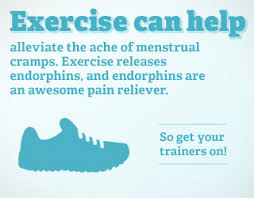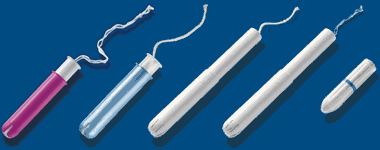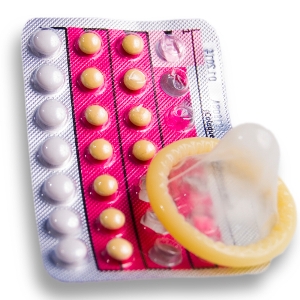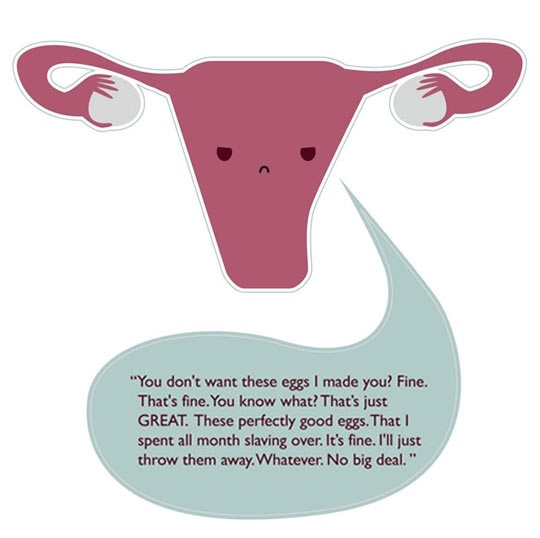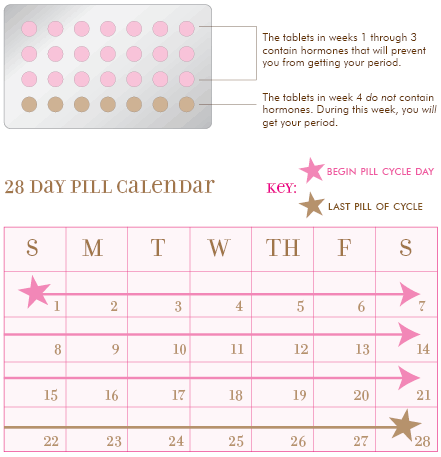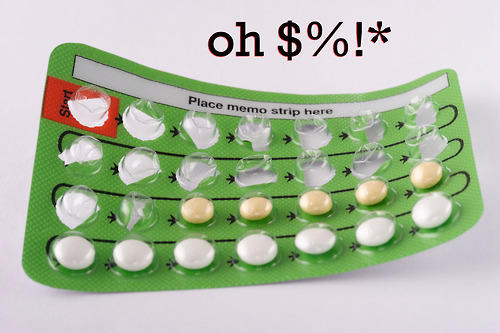Author Archives: downforabit
Thank you, Readers!
Hi Everyone!!!
It is with a sad heart that I inform you that I am no longer the Clinic Coordinator at New Generation Health Center. That being said, I will no longer be writing regular blogs (I will be a very very busy nursing student at Samuel Merritt University). I will still answer questions submitted to the blog but those answers (or anything I say here) will no longer be affiliated with New Generation Health Center. I can’t thank you all enough for subscribing and reading over the years.
Shawna
Out Run Aunt Flow! – Exercising on your Period!
Running is one of my favorite things to do. But it can be even more challenging when you’re on your period. If you’re anything like me, your period can leave you feeling bloated, crampy, and irritable. Ugh! Exercise is often the last thing women want to do feeling like that! However, exercising on your period is not only safe; it’s actually GOOD for you!!!
Menstrual Cramps:
Exercising on your period has all kinds of benefits! Exercise releases endorphins (chemicals in your brain) which naturally reduce pain!!! Yes, exercise can actually make cramps less painful! That’s because the endorphins help break down the hormone that causes menstrual cramps!
However, if you feel really ill or have extreme cramps, don’t force yourself to exercise. Sometimes when your body is asking for rest, it’s because all it really needs to recover is a bit of rest.
Protection:
Okay, so exercise is good for cramps but many women still worry about “springing a leak.” Fortunately, you can keep your period a secret by using the right tools!
Try using a tampon or menstrual cup rather than pads or panty liners; these options will trap the blood before it even leaves your body. If you’re still worried, double up your protection by using a panty liner with a tampon or menstrual cup.
Tampons:
A tampon is a cotton insert or other absorbent material placed into the vaginal canal to absorb menstrual flow. They come in all different sizes and with different (or no) applicators so you may want to try a few to see what feels most comfortable. And contrary to popular belief, tampons do not have any effect on virginity. I promise. Oh, they can also be worn while swimming!
Menstrual Cup:
A menstrual cup is a flexible cup (usually made from medical grade silicone) worn inside the vagina during menstruation to collect menstrual fluid. Unlike tampons and pads, the cup collects menstrual fluid rather than absorbing it and can be worn for up to 12 hours! Menstrual cups are more cost-efficient and environmentally friendly than tampons, most cups are reusable, and can be used for up to 5-10 years. Like tampons, can also be worn while swimming!
 Panty Liners:
Panty Liners:
Super thin pad designed to absorb daily vaginal discharge, light menstrual flow, or “spotting.” Also used as a backup for tampons and menstrual cups.
Wearing the right workout clothes is always important but even more so when you’re on your period. Try wearing loose-fitting clothing; tight clothing can add pressure to an already bloated tummy (definitely not comfortable). Sports bras are the exception to that rule. Sports bras should be snug but not super tight (you should be able to comfortably take a deep breath). The straps should be wider than a normal bra and should not dig into your shoulders. Test the bra’s support by jumping or running in place. You’ll be able to feel whether it’s sufficiently supportive or not.
For more information, click here to check out some tips to picking the right sports bra! Thanks Runner’s World!
 Choose pants that are in a dark color (black always works best). Avoid wearing anything super tight or super short. Also, avoid wearing thongs. Instead, wear boy-short type underwear which not only work great with panty liners but adds an additional layer of clothing in case of a leak. Lastly, throw on a dark sweatshirt or jacket before you head out; if you experience any leaks you can use the sweatshirt or jacket to tie around your waist to hide it!
Choose pants that are in a dark color (black always works best). Avoid wearing anything super tight or super short. Also, avoid wearing thongs. Instead, wear boy-short type underwear which not only work great with panty liners but adds an additional layer of clothing in case of a leak. Lastly, throw on a dark sweatshirt or jacket before you head out; if you experience any leaks you can use the sweatshirt or jacket to tie around your waist to hide it! 
Want to learn more about periods? Check out these previously published posts or send me an email at justaskshawna@yahoo.com!
Managing Your Period – Toolbox for Aunt Flow
In happiness & health,
Shawna
Reviewed by Andrea Raider, NP
Pearly Penile What???
Hi Shawna,
I just started having sex with my new boyfriend and I noticed he had some small bumps around the head of his penis. I asked him about it and he said that his doctor told him it was normal. He said it was called pearly pimples or something like that. What is that and is it something I should worry about it?
Thanks!
______________________________________________________________________
Great Question! Does it look something like this???
This is called Pearly Penile Papules, often abbreviated to PPP. They are tiny bumps that form a ring around the head of the penis. PPP is fairly common; about 20%-30% of the male population has them. We don’t know what causes them but we do know that PPP is nothing to worry about. PPP is not a sexually transmitted infection, it is not contagious, and poses no health risks. Although normal and totally not harmful, some men may choose to have them removed for aesthetic reasons (meaning, they don’t know like the way they look).
While PPP are harmless, other lumps or bumps in the genital area may not be. It’s always a good idea to be checked out by a clinician whenever in doubt.
In happiness & health,
Shawna
Reviewed by Kohar Der Simonian, MD
On and Off the Birth Control Train
Hi Shawna,
I’ve stopped taking my pills a month ago because I wanted to try a different method but I changed my mind and want to stick to pills. I still have 3 filled packs. Is it safe if I start again tomorrow?
–Questions about the Pill
This is a great question!!
You can definitely restart your pills tomorrow or whenever you’d like! Just remember to use a backup method, like condoms, for the entire first week. In fact, you should always use condoms if you are concerned about STD’s or HIV. Also, your period might be slightly off for the first pill pack, but that is normal and OK. If you don’t get a period in 4 weeks, come in for a pregnancy test.
Hope this helps answer your question!
In happiness & health,
Shawna
Want more information about the pill, like what to do if you miss a pill, click here!
Reviewed by Kohar Der Simonian, MD
To bleed or not to bleed?? How to control your period using the NuvaRing!
Hi Shawna,
I am going on vacation soon and really don’t want to be on my period. I am using the NuvaRing and my best friend told me that if I kept it in, I would skip my period. Is that true?
-Anonymous
Hi,
Great question! Your friend is right!
Although I have written about the ring before, I have not written about how to use it to skip periods (which is totally safe). For those who have never heard of the NuvaRing or still a bit confused about it, check out my previous blog post by clicking here.
It’s actually pretty simple to skip a period using the ring. Instead of taking the ring out after 3 weeks and going ring free for a week, simply leave the ring in for 4 weeks and immediately replace it with a new ring when the 4 weeks is up. This means there will not be a time in which you aren’t wearing a ring. Don’t worry; your ring is still protecting you against pregnancy during the 4th week, just don’t forget to remove it and replace it when the 4th week is up. You can do this just once or continually. And remember, it’s totally safe not to have a period, so using your ring in this way is a great option for people who hate having their periods.

Let me know if you have any other questions!
In happiness & health,
Shawna
Reviewed by Kohar Der Simonian, MD
Get the Skinny on Weight Gain & Birth Control
Many women are worried about gaining wight on birth control. In fact, it’s something women ask us about nearly every day here at New Gen. Fortunately, it’s not necessarily true. Check out this article written for Bedsider by Jessica Morse, MD, MPH. Some of you might even remember Dr. Morse, she was a clinician here at New Gen a few years ago and she is most definitely missed!
What myths have you heard about birth control??? First 3 people who leave a comment about a birth control myth they’ve heard will win a $5 gift card to Starbucks or Jamba Juice.
It’s a common story. A woman starts using hormonal birth control, finds herself gaining weight, and assumes the birth control is to blame. The tricky thing is that lots of research about hormonal birth control shows that, with one important exception, it’s probably not the birth control.
A note on personal experiences vs. the big picture:
Before we lay out the evidence, we want to acknowledge the difference between looking at lots of women on average versus an individual woman. Research tells us about women on average, but not about specific women’s experiences. When we describe what happens for women on average, we are not dissing personal stories. (Bedsider has big love for personal stories!)
Here’s why the big picture is important: it sets our expectations. Being influenced by our expectations is a basic part of human nature. That’s why the placebo effect exists, and it’s why this hatpin trick is gross even though we know it’s fake.
The big picture
Researchers have looked at whether hormonal birth control makes it more likely to get bloated or hungry. They’ve also looked at women’s weight changes over time when using specific birth control methods and compared them with women using methods with no hormones. With one exception, they’ve found no direct link between using hormonal birth control and gaining weight. Here are the details.
IUDs: There are two kinds of IUDs. One kind releases a low dose of progestin hormone (Mirena and Skyla) and the other kind has no hormones (ParaGard). Both kinds of IUDs mainly work inside the uterus, so there are minimal effects on the rest of the body. Studies show no difference in weight changes between women using hormonal IUDs and women using birth control without hormones.
The implant: The implant also releases a low dose of progestin hormone. Because the implant is relatively new, there are fewer studies about it. Early studies showed that about 5% of women using the implant got them removed due to concerns about weight gain. However, the weight changes don’t appear to be different between women using the implant and women using birth control without hormones.
The pill, the patch, and the ring: Birth control pills contain both an estrogen and progestin hormone, and are probably one of the most studied medicines on Earth. Many studies show that the pill does not cause weight gain, yet concern about weight gain is the main reason why women quit taking it. The ring and the patch are similar to the pill in terms of their ingredients and dose, so are not likely to cause weight gain, either.
That important exception
The shot: Most women don’t gain weight because of the shot, but some do. Interestingly, weight gain on the shot seems to be more common in young women who are already considered overweight. Additionally, the women prone to gaining weight because of the shot will usually notice a change within the first six months. If weight gain is absolutely not okay for you, the shot may not be the best choice.
The takeaway:
Understanding all of the details that can affect weight—like diet, exercise, and genetics—can feel overwhelming. The tendency is for people to gain weight throughout their lives, so being a year older is more likely to cause weight gain than birth control. But like we said—this is on average and doesn’t take into account women’s personal experiences. If you think your birth control is affecting your weight in a way you don’t like, talk to your health care provider to find another effective method that works for you.
No matter what birth control you’re using, it’s important to get a daily cardiovascular workout. And no one says you have to leave the bedroom for that.
Jessica Morse, MD, MPH
Thank you Bedsider and Dr. Morse for busting this common myth!
In happiness & health,
Shawna
Don’t forget to leave a comment about birth control myths you’ve heard to win a $5 gift card to Starbucks of Jamba Juice!
Health Insurance – Get Covered!
What is health insurance?
Health insurance is a way to pay for health care. It means not having to pay the full costs of medical services when you’re injured or sick (which can be VERY VERY expensive). You pick a plan based on the type of health care services you think you may need and pay a monthly fee, called a premium. In return, your health insurer agrees to pay a portion of your covered medical costs.
Each plan is different, but most plans cover preventive care, like doctor visits and screenings, as well as hospital visits, ER trips, and even prescription drugs. Some plans cover vision and dental, but you may need to pay for these plans separately.
*Many of you probably have the green Family Pact Card. That is NOT insurance. That only works in California and only covers the cost of family planning services, like birth control.
Why is health insurance important?
No one plans to get sick or hurt, but most people need medical care at some point. Unfortunately, medical care can be EXPENSIVE!!! According to Healthcare.gov, the average cost of a 3-day hospital stay is $30,000!!!! And fixing a broken leg can cost up to $7,500!!!! Having health insurance means you only have to pay a small portion of that.
So, how do I get health insurance?
Fortunately, there are now more ways to get health insurance than ever before. Some people can get health insurance where they work. However, there are many people whose jobs don’t offer health insurance or who aren’t working. It used to be that those people simply had to hope they didn’t get sick or injured but now, there is the Affordable Care Act (often referred to as Obama Care).
The Affordable Care Act means that everyone can now purchase health insurance (meaning you don’t need to have a job that offers it). Also, it doesn’t matter whether or not you have already been diagnosed with an illness. No matter what is going on in your life, you can get health insurance. There is even financial assistance for those who qualify!!
In order to get health insurance through the Affordable Care Act, you need to apply by March 31, 2014 (or you will have to wait another year before you can apply and get covered). Don’t worry, there is no reason you will be denied and remember, there is financial assistance for those who qualify so don’t let cost scare you from applying.
• For those in California, visit Covered California and fill out an application. For those outside of California, visit Healthcare.gov and fill out an application.
• Choose a health plan based on your budget and your individual health needs. Don’t worry; there are a lot of options and financial assistance if you qualify.
How do I choose the right health insurance plan?
Check on this video that can help answer that question!
For more information:
• Check out Healthcare.gov or CoveredCA.com
• Call 1-800-300-1506
You can get help from certified enrollment counselors!
I know this can be confusing but there is a lot of help out there. Go online or pick up the phone. Deadline is March 31, 2014!
In happiness & health,
Shawna
Stick It Before You Kick It! The 101 on the Birth Control Patch!
Happy 2014!!
This is the first blog of the year! Yay! It’s also the last Friday of the month! Why is that important? Well, I will now only be posting new blogs on the last Friday of the month! I may sneak additional blogs in from time to time but from here on out, you can expect to see a new post at the end of the month. Don’t worry though; you can still contact me by email anytime you have any questions – askshawna@yahoo.com
The first blog of the year is about the birth control patch. I have gotten several emails lately with questions about the patch and so I’m here to tell you all about it! And as always, feel free to comment or email any additional questions you may have.
What is the birth control patch?
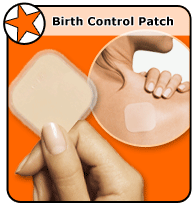 The birth control patch is a small patch that sticks to your skin to prevent pregnancy. Like other methods of birth control, the patch includes a combination of an estrogen (estradiol) and progestogen (progestin) to prevent pregnancy. If used correctly, the patch is a very effective (meaning it works really well) at preventing pregnancy.
The birth control patch is a small patch that sticks to your skin to prevent pregnancy. Like other methods of birth control, the patch includes a combination of an estrogen (estradiol) and progestogen (progestin) to prevent pregnancy. If used correctly, the patch is a very effective (meaning it works really well) at preventing pregnancy.
How does the birth control patch work?
The patch works by “telling” the ovaries not to release an egg (called ovulation). If no egg is released, there is nothing for sperm to fertilize (the fertilization of an egg by sperm results in pregnancy). However, if the patch is missed or used incorrectly, the ovaries don’t get the message (and may release an egg) making pregnancy possible if there has been recent unprotected sex (sex without a condom).
How to use the patch:
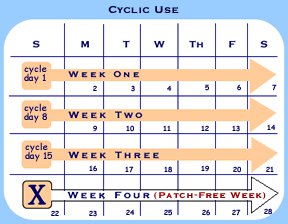 Wear the first patch for 7 days. At the end of the 7 days, take off the first patch and apply a new patch in a different location (see below for acceptable patch locations). At the end of those 7 days, take the second patch off and apply a new one in a different location. After the end of those 7 days, take the patch off and DO NOT apply another one. Instead, leave the patch off for 7 days. That’s, 3 weeks on & 1 week off.
Wear the first patch for 7 days. At the end of the 7 days, take off the first patch and apply a new patch in a different location (see below for acceptable patch locations). At the end of those 7 days, take the second patch off and apply a new one in a different location. After the end of those 7 days, take the patch off and DO NOT apply another one. Instead, leave the patch off for 7 days. That’s, 3 weeks on & 1 week off.
It’s during those 7 days of NOT wearing a patch that most women get their period (however, some women may or may not bleed the entire 7 days). Regardless of whether or not you are still bleeding, start a new patch only when the 7 days are complete. No sooner and no later.
Never go more than 7 days without wearing a patch, if you do, you may get pregnant.
Don’t use lotions or makeup on your skin near where the patch is
Don’t put the patch on the same part of your body for 2 weeks in a row – skin may become irritated. Also, don’t wear the path on your legs or breasts.
Some women experience breast tenderness when they first start using the patch. That generally goes away within a few weeks.
Before applying a new patch, think about the clothes you may wear that week and whether or not the patch may be visible.
Why some people love the birth control patch:
What to do if a patch falls off or I make a mistake?
Issues and mistakes with the patch happen. Although the patch is designed not to come off the skin, it’s definitely possible. Also, sometimes patch users forget when to take off or put on a new patch (if you forget often, you might want to consider switching birth control methods). Knowing what to do if that happens can help prevent an unplanned pregnancy. Read the following for some general instructions on what to do if a patch mistake happens!
If a Patch edge lifts up:
Press down firmly on the Patch with the palm of your hand for 10 seconds, making sure that the whole Patch adheres to your skin. Run your fingers over the entire surface area to smooth out any “wrinkles” around the edges of the Patch.
- If your Patch does not stick completely, remove it and apply a replacement Patch (no backup method is needed and your Patch Change Day will stay the same). Ask your healthcare professional for a replacement Patch prescription so you always have an extra Patch available.
- Do not tape or wrap the Patch to your skin or reapply a Patch that is partially adhered to clothing
If your Patch has been off or partially off:
- For less than 1 Day, try to reapply it. If the Patch does not adhere completely, apply a new patch immediately. (No backup contraception is needed and your Patch Change Day will stay the same)
- For more than 1 Day or if you are not sure for how long, you may become pregnant. To reduce this risk, apply a new Patch and start a new 4-week cycle. You will now have a new Patch Change Day and must use non-hormonal backup contraception (such as a condoms) for the first week of your new cycle
How to purchase a REPLACEMENT Patch:
- You can get a replacement Patch at the pharmacy where you filled your prescription
- You will need a replacement Patch prescription from your healthcare professional
- Unfortunately, Family Pact does not pay for the replacement patch. You will need to pay for the replacement Patch when you pick it up at the pharmacy.
From the Ortho Evra website:
http://www.orthoevra.com/how-use-loose-fall.html
In happiness & health,
Shawna
Reviewed by Kohar Der Simonian, MD and Andrea Raider, NP
A Pill a Day Will Keep an Unintended Pregnancy Away!
What is the birth control pill?
The birth control pill (also called “the Pill”) is a birth control method that includes a combination of an estrogen (estradiol) and progestogen (progestin) to prevent pregnancy. If taken correctly, the pill is a very effective (meaning it works really well) at preventing pregnancy. Although there a lot of different types of pills, they all work the same way. They vary by brand or by the amount of hormones in them. If you are interested in the pill, talk to your clinician about which one might be the best option for you. And if you’ve tried the pill before and didn’t like it for a reason other than forgetting to take it, talk to your clinician about the other types of pills available.
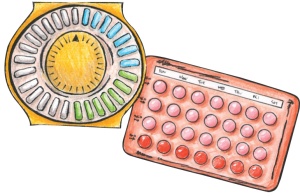 There is a pill that is progestin only – called the mini pill. The mini pill has slightly different instructions than what is listed below. If you are using the mini pill, please discuss proper usage instructions with your clinician or pharmacist.
There is a pill that is progestin only – called the mini pill. The mini pill has slightly different instructions than what is listed below. If you are using the mini pill, please discuss proper usage instructions with your clinician or pharmacist.
How does the birth control pill work?
The pill works by “telling” the ovaries not to release an egg (called ovulation). If no egg is released, there is nothing for sperm to fertilize (the fertilization of an egg by sperm results in pregnancy). However, if a pill is forgotten or missed the ovaries don’t get the message (and may release an egg) making pregnancy possible if there has been recent unprotected sex (sex without a condom).
How to use the birth control pill:
The birth control pill is most effective (works the best) when taken every day around the same time of day – the first week is especially important. A typical pill pack has 28 pills – 21 of those pills contain hormones and the other 7 do not. It’s during those 7 non-hormonal pills that most women get their period (however, some women may or may not bleed the entire 7 days). Regardless of whether or not you are still bleeding, start a new pack only when the 7 days of non-hormonal pills are complete. No sooner and no later.
*Every pack looks a bit different. Some are round. Some are square. Some are rectangular. Make sure you talk to your clinician or pharmacist about which pills are the active pills (the pills with hormones) and which are the non-active pills (the non-hormonal pills taken during the week in which you can expect your period). Also, not everyone starts their new pack on a Sunday. Whatever day you choose to start, be sure it’s the same day every month (meaning, if you start a new pack on Tuesday, every new pack thereafter will start on a Tuesday).
What to do if a pill or two are missed:
It’s common to forget a pill from time to time (if you forget often, you might want to consider switching birth control methods). Knowing what to do if that happens can help prevent an unplanned pregnancy. Here are some general instructions on what to do if you forget a pill or two.
|
Number of Pills Missed |
When Pills Missed |
What to do … |
“Should I use condoms? |
|
First 1 pill |
Beginning of pack |
(This means you may take two pills in one day.) |
Yes, use condoms for 1 week.
|
|
1 pills |
First week of pack |
(This means you may take two pills in one day.) |
Yes, use condoms for 1 week. |
|
2 pills |
2nd and 3rd week of pack |
For example, if you forget pills on Monday & Tuesday, you would take 2 pills on Wednesday & 2 pills on Thursday. |
No |
|
3 or more pills |
Any time in pack |
*If you use Family Pact, you can only pick up 3 packs of pills every 3 months. If you throw away a pack and start a new one because of missed pills, you will not have enough pills/packs to last until your next refill. If this is the case, please call New Generation Health Center. We have pills on site that we can give to you. |
Yes, use condoms for 1st week of new pack. |
I know this was A LOT of information. If you have any questions, you are always welcome to comment, send an email to askshawna@yahoo.com, call or make an appointment at New Gen (415.502.8336).
In happiness & health,
Shawna
Reviewed by Kohar Der Simonian, MD


